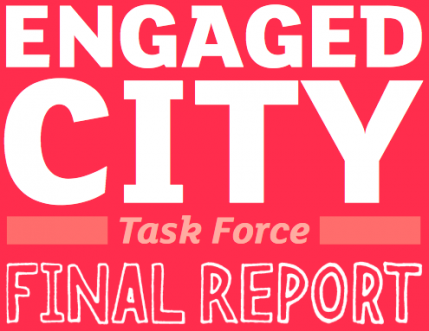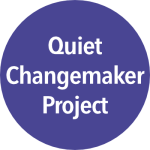
Late 2012 I was selected to serve on the Vancouver Mayor’s Engaged City Task Force (ECTF)…and promptly had to step down as I was heading to Spain and Morocco for 4 months.
But I remained interested in the work of the task force, following their “quick starts” released in mid 2013, and recently read the final report [PDF], which was approved at council last month.
About the ECTF and the report
The purpose of the final report was to “dig deeper into the roots of a disengaged and disconnected population,” specifically to
To examine innovative best practices for civic engagement, and seek to make progress on priority issues including improving the way the City communicates with citizens, engages newcomers, new immigrants and youth, consults on policy, increases voter turnout and enables community connection at a neighbourhood level.
City Council requested the ECTF to focus on potential improvements in three areas:
- Enabling neighbour-to-neighbour engagement
- Increasing civic literacy about, and opportunities for engaging
- Enhancing how the City engages with residents, and vice versa
City Council and the ECTF also decided to focus on certain demographics and areas of interest.
City Council requested recommendations that would be relevant to all age groups but asked the Task Force to put a special focus on residents between the ages of 18 and 35. … It also asked the Task Force to explore opportunities to expand engagement through the use of new technology. As well, since the Task Force had members from a number of cultural communities, we decided to also make special efforts to engage newcomers and new immigrants. (p. 15)
My reading lens
The lens I took when reading was: will the results lead to meaningful engagement of those underrepresented in or isolated from current ‘mainstream’ community engagement (who might well be engaged in ways that are not seen by dominant culture)? Or will it lead to more engagement of people that are already engaged?
The report
Firstly, thank you to all the volunteers who served on this committee. Such an endeavour takes time, expertise, compromise, courage for new ideas, and commitment. You had a big hill to climb.
The final recommendations fell under four valuable categories:
- Build knowledge
- Build capacity
- Build trust
- Build power
The recommendations run from the specifc (“Create a Public Space Action Association”) to the incredibly vague (“Develop specific strategies for engaging under-represented groups”).
A qualifier re: my thoughts. I admit I am a highly critical person. My instinct is to want to make things the best they can be, and my way of contributing to that is to play devil’s advocate, challenge thinking, and pointing out potential flaws or gaps.
My initial reaction: some gems, with overrepresentation of hipster/artsy/tech ideas, and lacking voices from underrepresented/marginalized populations.
Gems
There are a selection of observations and recommendations the report made that I wanted to highlight as being particularly valuable:
Observations/reflections (all direct quotes)
- accurate information from a trusted source, in a convenient location, delivered graphically and/or in first languages is crucial to engaging community members
- many organizations are struggling to find, access, and retain affordable (private) spaces in which to bring people together
- To build trust, several stakeholders stressed the importance of providing extra time for complex planning issues
- “food encourages people to come out when nothing else will draw them”
- the need for smaller, localized opportunities for engagement to complement those that that are citywide
- Many residents expressed an interest in becoming more invested in neighbourhood and citywide decisions, yet were concerned that some groups dominate consultations and can intimidate others with alternative views
Recommendations (all direct quotes, any emphasis mine)
- “City Hall 101” that employs graphics and animation to describe City processes
- seek opportunities to increase awareness of 3-1-1 (through civic facilities, but also community groups, churches, etc.), paying attention to its promotion in languages other than English.
- all internal project briefs include a dedicated budget line for communications and engagement
- develop an evaluation framework for the selection and monitoring of online tools
- develop a condo toolkit that helps residents to determine their building’s assets and identify opportunities to promote social inclusion [I started a condo newsletter a few years ago and great things came out of it]
- provide regular facilitation training opportunities for staff and work to develop guidelines on the elements of a productive meeting.
- community bulletin board[s]
- filming public addresses from all of the [election] candidates and then sharing those videos on YouTube
- work with the local post-secondary institutions on a voting registration drive to allow people as young as 16 to register to vote [LOVE this idea – register even if you can’t quite vote yet]
- initiate a process to review whether or not to lobby the Province of BC to extend voting rights to permanent residents
- take action on campaign finance reform [oh yes! my opinions here]
Hipster/arts emphasis
Oh hipsters. I suppose I could count myself among the margins of this amorphous “group”. Some recommendations include “Create a Public Space Action Association” and talk of potlucks and long table conversational meals. Various civic and community organizations arlready take action in these areas; yes, there is an opportunity to scale up some of these ideas, but the connection to the target demographics of the report was missing. I can’t see how these would further engage the unengaged except at a minute scale.
There was a surprising amount of focus on artist space/cultural venues in this report. Especially considering the lack of focus on other important areas (e.g. Aboriginal voices). While I firmly support the need to make accessible and protect cultural venues, the notes about this in the report seemed very tangential. Perhaps because I’m not a part of the artist community, I’m missing something here. Yes, artists are marginalized in many ways but wasn’t the report meant to focus on youth, newcomers and new immigrants?
Social media/tech
When I see “social media” or “online community” in any recommendation, I twitch a little. Yes, social media is an important communication tool. Yes, some online communities are successful. However, these just two tools. Used by people with easy access to internet and/or smart phones. Who are statistically more likely to already be more civically engaged. Yes, these are tools that should not be excluded from civic engagement efforts by the city; social media especially is a given. I perceived that perhaps the report included tech-recommendations because the city originally asked for them, not because they are actually meaningful to the original intent of the task force. Especially as the final report acknowledges:
…we found that those who have language barriers or do not use computers and social media are particularly likely to be isolated from important issues and decision-making processes.
Missing voices
Finally, the report is honest in its lack of success in its progress re: underrepresented groups.
“We were limited in our ability to connect with people from traditionally under-represented demographics. … We feel it’s important for us to acknowledge the absence of voices from Aboriginal communities in this process. “
Very unfortunate. To me, this alone is the downfall of the report. The committee acknowledged the trust- and relationship-building that is required to do this work well, and within a ~1 year time frame, success seemed to have insurmountable barriers.
This gap reminds me of two different thoughts I’ve come across in my work. The first is from the infinite wisdom of Twitter, the second came from my interviews on “new ways to advance social good” for a 2013 HRSDC research project.
- If you want to involved more [insert marginalized population] in your work, make them the centre of your work. That way you don’t have to invite them in. They already are in.
- Plan with a focus on the most-barriered populations. If your work is inclusive to them, it will be inclusive to all.
Reading Appendix B, which lists the events they held, the people they spoke with, the reports they read, I feel there was a missed opportunity to outreach and to work with existing infrastructure to hear diverse voices (i.e. work with partners that engage people where, don’t ask people to come to you). The task force shouldn’t have been expected to build relationships with individuals from scratch, so connecting through others should have been vital.
Recommendation #2, “Develop specific strategies for engaging under-represented groups,” should have been what this report was about. Isn’t it what the city asked the ECTF to do in the first place? Moving forward, this is where the work should focus.
This year is the year of staff creating an implementation plan and benchmarks. I look forward to the outcomes.







